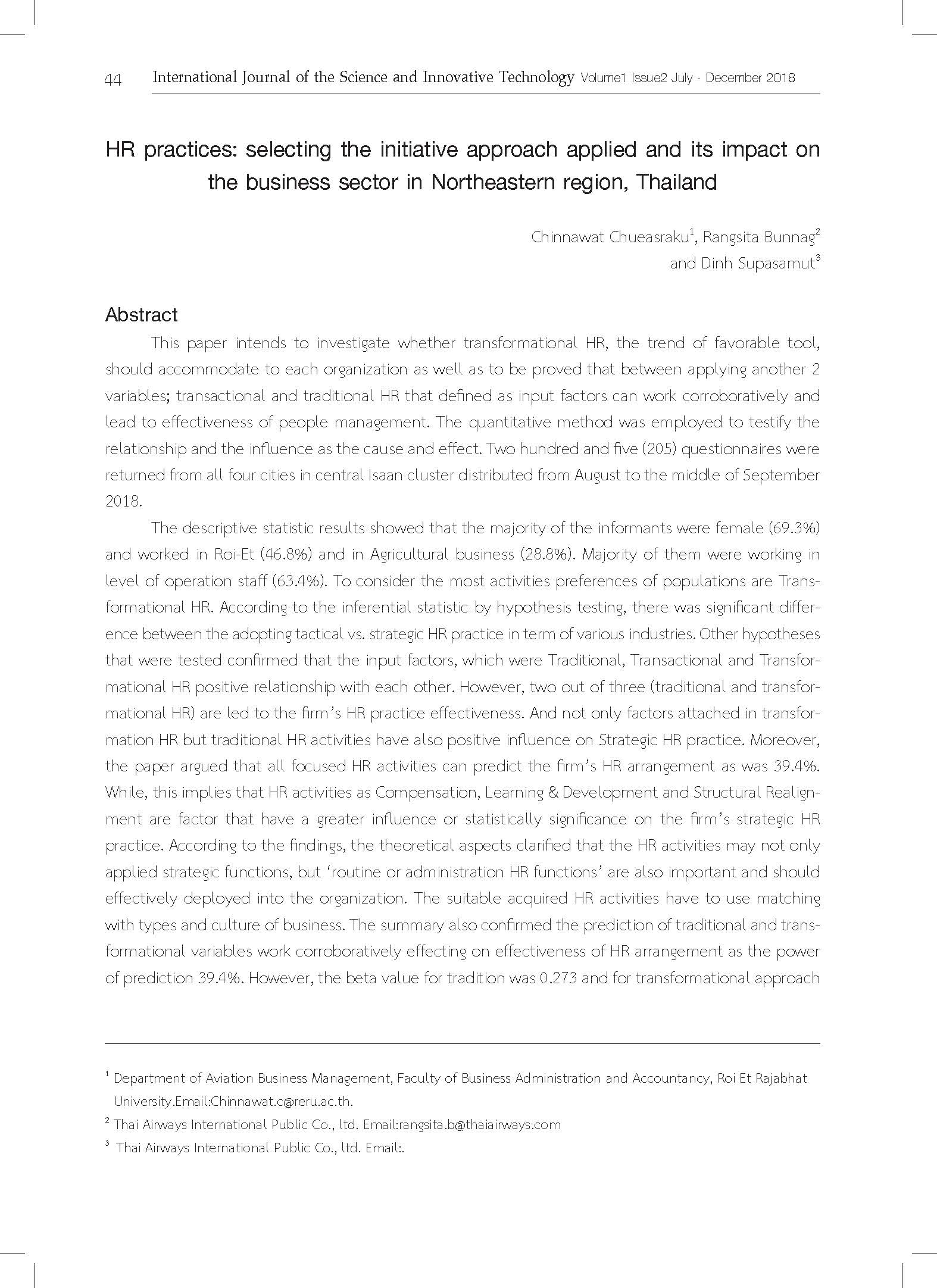HR practices: selecting the initiative approach applied and its impact on the business sector in Northeastern region, Thailand เ
Main Article Content
Abstract
Abstract
This paper intends to investigate whether transformational HR, the trend of favorable tool, should accommodate to each organization as well as to be proved that between applying another 2 variables; transactional and traditional HR that defined as input factors can work corroboratively and lead to effectiveness of people management. The quantitative method was employed to testify the relationship and the influence as the cause and effect. Two hundred and five (205) questionnaires were returned from all four cities in central Isaan cluster distributed from August to the middle of September 2018.
The descriptive statistic results showed that the majority of the informants were female (69.3%) and worked in Roi-Et (46.8%) and in Agricultural business (28.8%). Majority of them were working in level of operation staff (63.4%). To consider the most activities preferences of populations are Transformational HR. According to the inferential statistic by hypothesis testing, there was significant difference between the adopting tactical vs. strategic HR practice in term of various industries. Other hypotheses that were tested confirmed that the input factors, which were Traditional, Transactional and Transformational HR positive relationship with each other. However, two out of three (traditional and transformational HR) are led to the firm’s HR practice effectiveness. And not only factors attached in transformation HR but traditional HR activities have also positive influence on Strategic HR practice. Moreover, the paper argued that all focused HR activities can predict the firm’s HR arrangement as was 39.4%. While, this implies that HR activities as Compensation, Learning & Development and Structural Realignment are factor that have a greater influence or statistically significance on the firm’s strategic HR practice. According to the findings, the theoretical aspects clarified that the HR activities may not only applied strategic functions, but ‘routine or administration HR functions’ are also important and should effectively deployed into the organization. The suitable acquired HR activities have to use matching with types and culture of business. The summary also confirmed the prediction of traditional and transformational variables work corroboratively effecting on effectiveness of HR arrangement as the power of prediction 39.4%. However, the beta value for tradition was 0.273 and for transformational approach is was 0.421. This implies that the adoption of transformation is a factor that has a greater impact than traditional application. Apart from that even the factors as routine (traditional HR) and strategic activities influence the people management effectiveness as shown in results but HR information system (transactional HR) has also important as well as we must groom HR person all the time to oversee and manage HR department effectively.
Article Details
References
and Human Resources Management
(second edition).
[2] Chueasraku, Chinnawat. (2018). Shift from Human
Resources to Human Capital: Is it compatible
with firms in central-Isaan?. Oral presentation
at the 2nd International Conference on Education
and Technology Research (ICET II):
Critical Innovation. Roi Et Rajabhat University.
July 26th, 2018.
[3] Cohen, J. (1988). Statistical Power Analysis for
the Behavioral Sciences, 2nd ed. Hillsdale, NJ:


